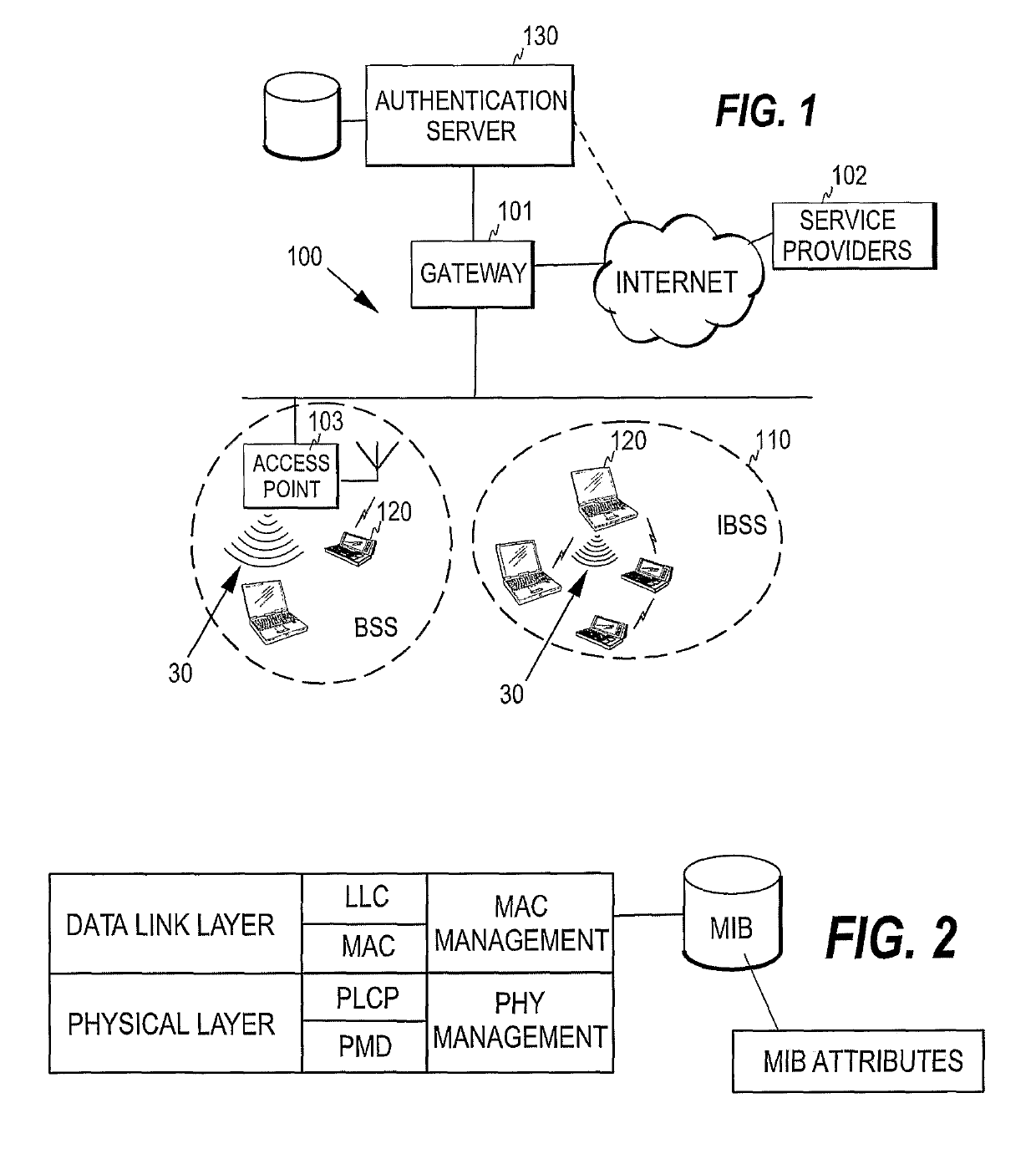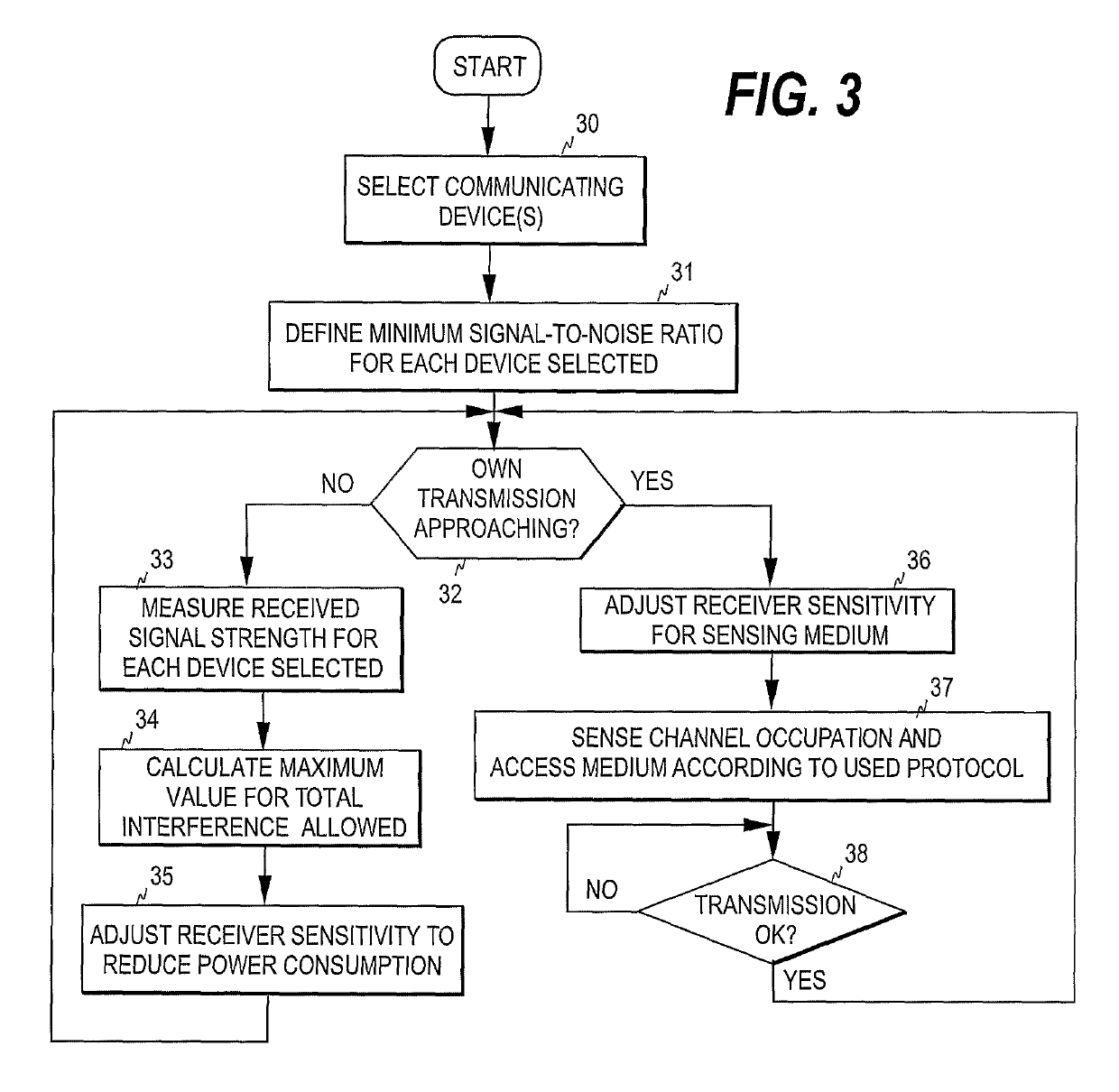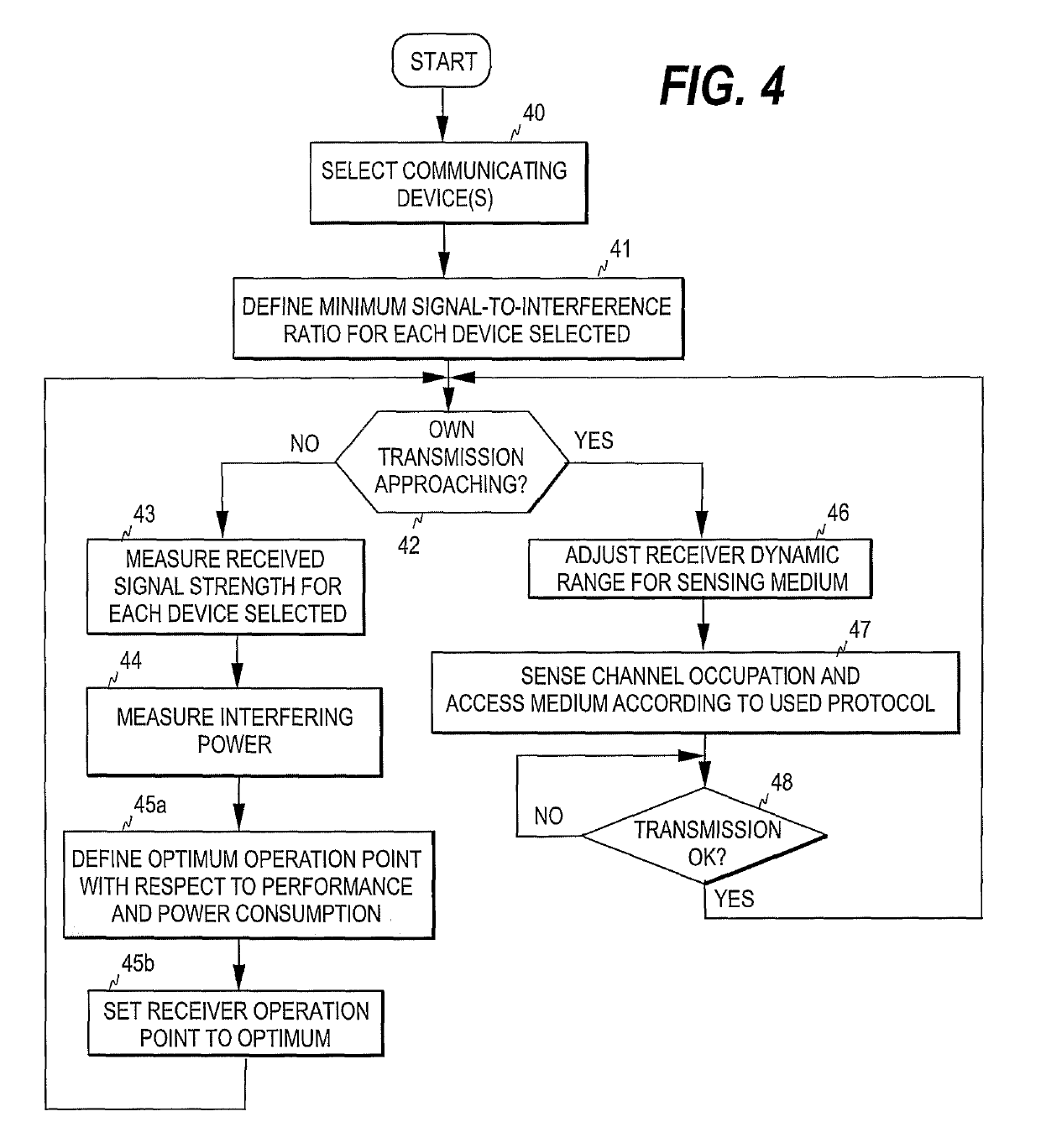Reduction of power consumption in wireless communication terminals
a wireless communication terminal and power consumption technology, applied in the field of reducing power consumption in wireless communication terminals, can solve the problems of increasing power consumption, but the problem of critical issue of power consumption, and achieve the effect of reducing power consumption in wireless terminals
- Summary
- Abstract
- Description
- Claims
- Application Information
AI Technical Summary
Benefits of technology
Problems solved by technology
Method used
Image
Examples
Embodiment Construction
[0029]FIG. 1 illustrates a typical WLAN communication system. The system includes one or more WLAN networks 100, each connected by means of a gateway 101 (a router) to another network, such as the Internet, which contains service providers 102. Each WLAN network comprises one or more access points 103, each communicating wirelessly with the terminals within the coverage area, i.e. the cell, of the access point and thus forming a bridge between the terminals and the wired network.
[0030]As mentioned above, in an infrastructure network an access point and at least one terminal is said to form a Basic Service Set (BSS). A series of BSSs then forms an Extended Service Set (ESS). These BSSs are connected to each other by a Distribution System (DS), which can be a wired network, such as an Ethernet LAN, within which TCP / IP packets are transmitted, or a wireless network, or a combination of these two. However, the basic type of an IEEE 802.11 LAN is an Independent BSS (IBSS), which consists...
PUM
 Login to View More
Login to View More Abstract
Description
Claims
Application Information
 Login to View More
Login to View More - R&D
- Intellectual Property
- Life Sciences
- Materials
- Tech Scout
- Unparalleled Data Quality
- Higher Quality Content
- 60% Fewer Hallucinations
Browse by: Latest US Patents, China's latest patents, Technical Efficacy Thesaurus, Application Domain, Technology Topic, Popular Technical Reports.
© 2025 PatSnap. All rights reserved.Legal|Privacy policy|Modern Slavery Act Transparency Statement|Sitemap|About US| Contact US: help@patsnap.com



